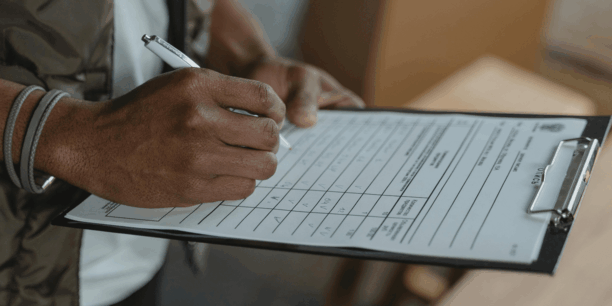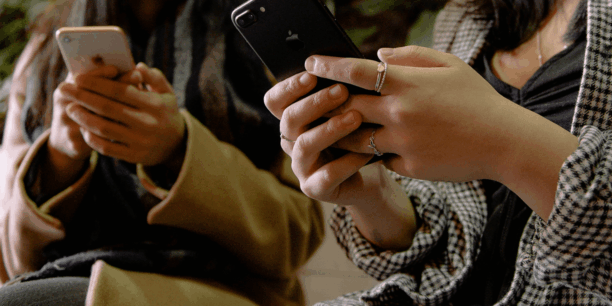Nonprofit Marketing: 10 Lessons to Increase Conversions and Strengthen Community

Effective marketing is crucial for amplifying your nonprofit’s mission and fundraising efforts. When marketing efforts align with your development and fundraising teams, they can accelerate growth and foster a connected community of supporters.
That said, nonprofits must navigate new platforms, algorithms, and donor preferences regularly to reach their target audiences and drive action effectively. Adaptability is key as challenges, opportunities, current events, and fundraising trends evolve.
Below, we share 10 nonprofit marketing tips to help enhance visibility and drive donor engagement amid ongoing advancements in the sector. Discover how to stay ahead of the trends, craft compelling messages that resonate with your unique audiences, leverage various communication channels effectively, and connect with donors in deeply personal ways.
1. Grow a Community of Supporters to Increase Connection
The more you focus on donors as a community, the more you can encourage them to view their support as a core part of their identity. Community isn’t a list or the segmenting of an email appeal. It’s about creating deep connections between supporters and allowing them to activate together on your behalf. To foster connection among supporters, get to know them through key donor information and demographics, such as:
- Age
- Geographic location
- Employment status
- Attitudes
- Motivations
- Personality and hobbies
- Lifestyle
- Communication preferences
- Relationship to your nonprofit (such as first-time donors, lapsed donors, recurring donors, volunteers, or long-time donors)
Once you have this information, act on it. For example, if several donors live in the same area, find a volunteer to champion a local chapter of your cause or organize an in-person event. If you find that younger donors prefer communicating over social media, leverage those channels for meaningful conversations and user-generated content.
Despite delays, the sunsetting of cookies to collect user data is inevitable in a privacy-forward future. To counter this, collect first-party data through donor surveys, such as on a post–donation confirmation page or post-event email survey. Once you know more about your donors, you can apply the findings to every aspect of your digital marketing strategy.
8 Donor Data Points to Collect2. Communicate Impact to Drive Donations
Classy’s Why America Gives report found that potential donors look for causes where there’s a clear need for help and an opportunity to feel like they can be part of the solution. That means centering your impact in all donor-facing communications is critical.
Leverage impact tiles on Classy Studio pages to tie donation amounts to an action. For example, a food bank’s impact tiles might include:
- $25 provides 50 bags of pasta
- $50 provides 20 gallons of milk
- $100 provides a week of meals for a family
- $300 provides a month of meals for a family
However, impact extends past the initial donation. That means you’ll need to go beyond a generic one-time thank-you and follow up with donors as projects are completed, dollars are spent, or your nonprofit annual report gets released. Continuing to remind them of why they gave to you in the first place can increase the chances of them returning to give another donation in the future.
Additionally, remind donors that there are many ways they can make an impact. Highlight volunteer opportunities, upcoming events, peer-to-peer fundraising, branded merchandise, current campaigns, and other options for giving. Classy’s forthcoming Giving Cart feature will enable donors to support your nonprofit in multiple ways with one easy e-commerce-like checkout.
3. Segment Communications for Stronger Relationships
Not every supporter has the same level of connection to your nonprofit. For example, monthly recurring donors are already deeply invested in your work, whereas first-time donors who arrived from a peer-to-peer campaign may only know about you because a friend asked them to support their fundraising goal. Segmentation lets your nonprofit move beyond these donor cohorts into two groups to deliver more personalized, relevant messaging.
The recurring donor may receive messages that express your ongoing appreciation, offer new ways to engage, or communicate the direct impact of their donations. Meanwhile, the first-time donor may need a reminder that their trusted peer is already a supporter and receive a welcome series with key information about your cause.
Segmenting communications shows donors you care about them and their unique contributions and interests. You can define donor cohorts based on characteristics such as:
- Acquisition channel
- Giving frequency
- Demographics
- Communication preferences
- Programmatic interests
At a minimum, group supporters into four crucial categories based on donation amount to determine the most appropriate donor stewardship actions to take:
- New donors: Send a welcome series or invite them to join your recurring giving community for the opportunity to amplify their impact.
- Recurring donors: Deliver an annual report that shows the impact of their total year-end giving or encourage them to increase their gift amount.
- Mid-level donors: Invite them to set up a peer-to-peer campaign for their birthday or share opportunities to make a major gift.
- Major donors: Communicate regular updates on their impact or deliver a personalized donation request to support a new program, fund a match, or support your cause in another unique way.
4. Build Email Lists for Reach and Sustainability
Social media outlets and search engine algorithms get constantly optimized for in-platform user actions and reach. As a result, engagement rates for nonprofit and business profiles tend to decrease, with fewer people seeing your posts. On the other hand, email is a digital channel direct to your supporters that doesn’t lose steam at the whim of an algorithm.
Creating owned channels like email lists allows nonprofits to reach engaged donors, send personalized thank-you notes, and nurture contacts into a community that can weather changes in search engine optimization and the social media landscape. Nonprofits may also collect phone numbers from donors who prefer to opt in to text message updates.
When people sign up for your blog, email updates, or newsletter, they open their doors to your brand. However, providers like Gmail give users a simple one-click option at the top of emails to unsubscribe. Therefore, it’s crucial to send meaningful messages at the right time to the right people. Track email metrics like open rates, conversion rates, and unsubscribe rates to see what content most resonates with your audience and continue iterating to maintain the right balance.
Maximize the Impact of Your Nonprofit Email Marketing CampaignsImportant Update: New Email Sender Requirements
While email has far fewer updates than social media platforms or search engines, one critical change took place in February 2024. Senders of commercial emails must comply with the change by June 2024, or they will get blocked.
If your nonprofit sends more than 5,000 emails daily to Google or Yahoo accounts, it’s crucial to comply with the companies’ new deliverability rules:
- Authenticate all emails through SPF, DKIM, and DMARC. You must work with your email service provider (ESP) and IT team to set these up.
- Enable the post-list unsubscribe feature and process those requests in two days or less. This differs from the normal unsubscribe link in email footers and is usually automated through your ESP. “Mail-to” one-click unsubscribe is acceptable for now, but you must convert to “post” by June 1, 2024, to fully comply.
- Maintain a spam-complaint score under 0.3%. Use sites like Google’s Postmaster Tools to monitor your spam rates. The recommended best practice is to be at or under 0.1%.
5. Win with Mobile-Responsive Donation Pages
Supporters want to interact with your organization from their smartphones. If you don’t have a mobile-friendly donation page, you risk losing visitors midway through the process to switch to a desktop or abandon the checkout process altogether.
Additionally, at least 20% of U.S. adults between the ages of 18 and 29 have no other way of accessing the internet beyond their smartphones. Having a nonprofit website optimized for mobile traffic ensures you can connect with younger generations.
One way to do this is to incorporate embedded donation forms on any page. We found that Classy customers using an embedded checkout form during the giving season saw up to a 28% improvement in revenue per site visitor.
Building a page in Classy Studio? We make it easy to toggle to a mobile view to ensure your mobile experience converts prior to publishing.
Get 7 Quick Tips to Mobile-Optimize Your PageAs social media platforms continue to evolve, so do opportunities for nonprofits. From partnerships and collaborations to engaging social media posts, the top platforms are ripe with potential. Below is a cheat sheet on how to excel in social media marketing.
Instagram for Nonprofits
- Use Instagram collab to co-author content with influencers for greater engagement
- Leverage Meta’s Creator Studio app to schedule Instagram reels in advance
- Post stories with high-link potential in your story highlights to drive traffic to your site
TikTok for Nonprofits
- Build brand awareness and raise funds through a TikTok hashtag campaign
- Use trending sounds to correspond with the algorithm for greater engagement
- Include a fundraiser on your profile
Facebook for Nonprofits
- Chat in real-time with supporters using Facebook Messenger to build relationships
- Leverage Facebook ads to reach new donors interested in your nonprofit
- Use Facebook group features to help boost engagement and build communities
LinkedIn for Nonprofits
- Use post templates, link stickers, pinned comments, and the commitments section on your company page to showcase your nonprofit’s values and build engagement
- Encourage staff to connect to your LinkedIn page for a wider reach
- Promote user-generated content from your supporters
7. Create Consistent Messaging across Channels
Think about your nonprofit as one continuous brand, from your website and ad copy to your emails and campaigns. You want to create a cohesive experience for supporters so they can recognize your cause and form a quick emotional connection to your message each time they engage with your content.
Additionally, develop unique donation experiences for specific campaigns and ensure they match all related marketing for that campaign—from typography to tone. You can lean on custom donation forms to bring your brand to life in new campaigns and consider branded campaign templates for pages you recreate over and over.
Presenting a clear story across marketing channels through visuals and text builds donor trust in your brand. It also means supporters consistently receive what they expect from your organization. By creating a brand marketing guide, you can direct your team and ensure all staff know how communications should look, feel, and sound.
Pro Tip: Nonprofits can sign up for a free Canva Pro account. Use Canva’s brand kit feature to upload the essential elements of your nonprofit’s brand and apply them to anything you design, from campaign page headers to Instagram stories. You can even manage multiple brand kits for unique campaigns like Giving Tuesday.
Grab 8 Simple Designs to Create for Free on Canva8. Run A/B Tests to Understand What Drives Conversions
Data drives effective marketing activities. Specifically, A/B testing, also called split testing, lets you compare how two different versions of a marketing message perform.
At Classy, we consistently A/B test our product to find what drives conversions. We then roll out the winners so each nonprofit can benefit from our learnings. For example, in a recent testing, we saw an 11% increase in gross donation volume per visitor when using Classy’s Intelligent Ask Amounts.
You can A/B test several elements in your marketing campaigns, such as:
- Email subject lines
- Number of donation form fields
- Donate button shapes, colors, sizes, placements, and copy
- Storylines in appeals
- Wording of your ask
- Call-to-action prompts
- Types of visual content
- Post-donation messaging
Seeing which options lead to more engagement allows you to make data-informed decisions about your wider marketing efforts.
When testing emails, use your content marketing system or email marketing software to review open and click rates. Continual testing will help you learn what content your supporters respond to and ensure the success of your nonprofit marketing campaigns.
9. Adapt Marketing Strategies to Leverage AI
While it continues to evolve at a rapid pace, artificial intelligence (AI) is here to stay. Nonprofits that adapt their marketing efforts to leverage AI have an opportunity to:
- Nurture personalized donor relationships at scale: AI has the potential to analyze donor behaviors and preferences to craft messages that resonate. When insights are derived from robust platforms, AI can predict personalized ask amounts to drive more revenue. With a community of more than 150 million and $30 billion raised to date across the Classy and GoFundMe platforms, Classy’s Intelligent Ask Amounts centers on a breadth of insights that other nonprofit technology can’t match.
- Provide predictive insights for donor engagement: AI can assist with the prospect research process to identify potential major donors and tailor future experiences based on donors’ changing interests over time.
- Refine donor segmentation for targeted marketing: AI can delve deeper into donor data to identify cohorts for messaging that matches their motivations and leaves them feeling part of a unique community.
- Create timely, heartfelt communications: AI can help nonprofits improve response times for thank-you notes and impact updates to keep donors informed and build trust with your nonprofit.
In addition to leveraging machine learning, it’s also critical for nonprofits to keep informed on how other companies use AI and any related implications for marketing and outreach. For example, Google and Meta have been adding generative AI features to their search experiences, which influences what people see when they look up an organization or submit a search query. As we learn more about how people interact with these features, nonprofits will need to adapt to position their content accordingly.
10. Form Connections through Visual Storytelling
The human brain can process images in as little as 13 milliseconds, making visual storytelling a powerful vehicle for communication. Visual narratives establish quick emotional connections to inspire giving. Harness the power of visual storytelling through content marketing that showcases your nonprofit brand in action.
Visual content ideas for nonprofit marketing may include:
- Photos and videos of those impacted by your mission
- Infographics relaying statistics about your cause
- Short-form videos to share on Pinterest, TikTok, or Instagram
- Vlogs or testimonials from fundraisers, staff, or volunteers
Pro Tip: High-quality content boosts engagement and helps your nonprofit appear more professional. Explore free tools like Pixlr, Unsplash, Pexels, and Google Slides that can help you edit and refine your pictures.
6 Unique Examples of Nonprofit Visual StorytellingAchieve Nonprofit Marketing Goals with Strategies That Encourage Lifelong Supporters
The nonprofit marketing landscape is always changing. While it’s critical to stay abreast of the latest platforms, algorithms, and donor preferences, nonprofits can also take basic steps to ensure a strong, evergreen marketing strategy.
Start today by reviewing these 10 tips with your marketing team. Look for tactics to include in an A/B test or messaging that could get streamlined with AI support. Then, consider how your existing marketing tactics have contributed to your overall fundraising strategy to pinpoint areas you know work and those you’d like to revamp. Small tweaks can make a big difference in how you connect and engage with supporters.
Copy Editor: Ayanna Julien

Explore Classy's Suite of Fundraising Intelligence Tools


